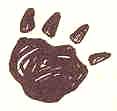Bear truths
 THIS is a delightful portrait of the now' extinct Ursus spelaues, largest of the bear family. Known to have coexisted with the Neanderthal human and later, with humans of our own spe Icies during the later part of the Ice Age, the cave bear survived to, or even beyond the end of that age. Although dead and extinct now for thousands of years, fossilised remains of this fascinating species have been found in Europe, Russia and Britain, which palaeontologists have studied over the years.
THIS is a delightful portrait of the now' extinct Ursus spelaues, largest of the bear family. Known to have coexisted with the Neanderthal human and later, with humans of our own spe Icies during the later part of the Ice Age, the cave bear survived to, or even beyond the end of that age. Although dead and extinct now for thousands of years, fossilised remains of this fascinating species have been found in Europe, Russia and Britain, which palaeontologists have studied over the years.
Finnish palaeontologist Bj6rn Kurt6n's affair with the cave bear started in the '50s, while he explored the cupboards of the geology department at the University of Helsinki. He begins this book by sharing the excitement of various discoveries by experts through the years, theories propounded on the history of the cave bear, and major hypotheses postulated from time to time.
Several interesting facts and theories emerge from Kurt6n's study. One holds that the cave bear evolved into a dwarf race just prior to its extinction. A contradictory opinion is that there were two distinct size groups among,these bears. The variations in size and shape and, moreover, factors like the preponderance of males, suggest aberrations in reproduction, seen by some as symptomatic degeneration. It has been hypothesised that this degeneration became so extreme that the species could riot survive any longer.
An interesting diagnosis of maladies suffered by the cave bear includes osteoarthritis, rickets (probably due to their long sojourns in dark caves without sunshine), infection of the sinuses and parasitic worms, besides mechanical damage resulting from accidents, blows and bites.
Brilliant illustrations by Margaret Lambert Newman take the reader on a fascinating trip of the Ice Age. The ultimate significance of the book is perhaps best expressed in the author's own words (from the chapter The Extinction), "We have come a bit ahead since 1942, when Sir Julian Huxley stated that palae 'ontology, by its very nature, cannot throw any important light on selection. We can now hope that study of differential mortality, combined with observations on actual evolutionary. trends through time, may give important new information to the student of evolution".
